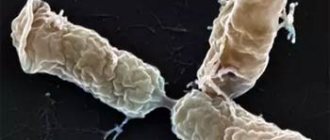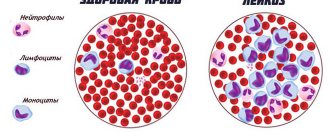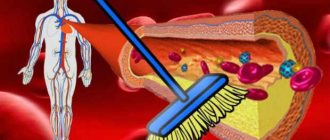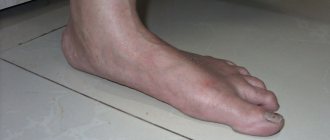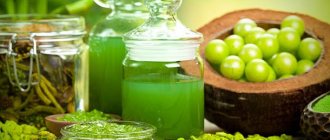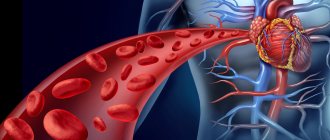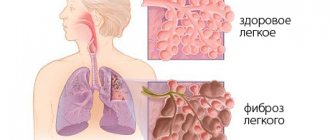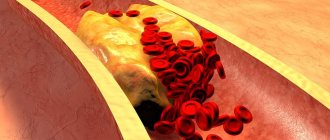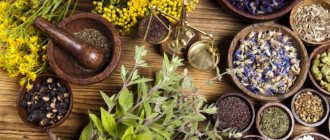Platelet Boosters and Low Platelet Products
Products that stimulate blood platelets in the bloodstream are needed when they suddenly begin to clot poorly.
Platelets are blood cells whose main function is to maintain normal levels of blood clotting. Font Color = #38B0DE=https://www.youtube.com/watch?v=- Proud Gifts.
They are very important for the body, and low levels can lead to serious problems. Therefore, it is not recommended to regulate the situation on your own - you should consult a doctor as soon as the platelet count decreases.
A decrease in platelet count is called thrombocytopenia.
There are a number of reasons that can cause this problem:
- Development of autoimmune diseases, including HIV infection.
- Development of viral diseases.
- Development of blood diseases.
- Severe poisoning.
- Chemotherapy.
- Some types of drugs.
- Pregnancy.
- Food allergies.
Pregnancy and chemotherapy differ from this area in terms of the development and course of thrombocytopenia.
Thrombocytopenia develops regularly during pregnancy, especially if the woman has pre-existing conditions for this disease. Acute cases can be dangerous for the expectant mother due to high blood loss caused by impaired blood clotting.
However, thrombocytopenia in pregnant women:
- does not become an obstacle to the birth of a child;
- does not become an obstacle to spontaneous childbirth.
It can be dangerous, just in case.
- Abortion;
- C-section.
After childbirth, the platelet count in a healthy woman usually returns to normal. It can also be helped by eating right.
Chemotherapy is one of the most important tools in the fight against cancer, which is often impossible to avoid, but it has a detrimental effect on platelet levels, sometimes to the extent that it becomes necessary to use platelets for blood transfusions.
It is important that the patient follows certain rules until the end of treatment:
Pay special attention to handling piercing and cutting objects. Use gastrointestinal protectors
Use a soft toothbrush. Use an electric razor. Do not take aspirin or medications containing aspirin.
This will allow for a safe passage during difficult times.
Symptoms and consequences
Symptoms of thrombocytopenia are clearly visible.
It includes
- Lots of bumps and bruises.
- Significant increase in menstruation, fluid loss.
- Blood in stool and urine.
- Blood on the gums while brushing your teeth.
- Problems with blood clotting even with minor abrasions.
- Frequent nosebleeds.
If these problems are identified, it is important to see a doctor as soon as possible - it is much easier to control thrombocytopenia and increase the blood pressure of these organs in the early stages. In addition, these symptoms may be signs of other even more serious diseases.
In addition, these symptoms may be signs of other even more serious diseases.
Thrombocytopenia should not be treated lightly.
The onset of the disease can have such consequences as, for example,
- Thrombosis;
- Strokes;
- Heart attacks;
- Kidney disease;
- increased blood pressure;
- heavy bleeding.
This can be fatal, as even the smallest injury causes serious bleeding problems.
Possibilities of increasing platelet count
An independent increase in platelet count is possible only at the earliest stage of thrombocytopenia. If the disease develops more progressively, you should consult a doctor.
This is what we should do at home:
- Add a large amount of black foods to your diet: liver, buckwheat, pomegranates. Increase your consumption of fruits and vegetables.
- Fewer foods that can cause blood thinning: Citrus fruits, ginger, raspberries, olive oil.
A diet with elevated blood platelets, which cause thickening of the blood or risk of blood clots, allows the presence of these foods in the diet. - Only caffeine and alcohol.
- Excluding fried and fatty foods.
In some cases, thrombocytopenia is caused by a lack of vitamins such as B12.
Taking vitamin complexes in which they are present can help overcome this problem.
https://www.youtube.com/watch?v=VWXSRQ2F-YYY
The most commonly used medications in this case include the following:
- Prednisolone.
- Itamsilat.
- Codecor.
- Vikasol.
- Derinat.
- Thromboetin.
It is important to remember that many of these drugs are used in combination or have side effects. All prescriptions for treatment must be written by a doctor
Causes of thrombocytopenia and platelet levels in the blood
- A phenomenon such as a decrease in platelets may not be a separate pathology, but a physiological problem, a side effect of a condition. For example, in women, thrombocytopenia is often observed during pregnancy.
- This condition is also typical for those who are undergoing chemotherapy, are treated with a certain type of medication, and even have food allergies.
Grouped red blood cells quickly flowed into the “broken” vessel, causing your blood to stop and a dense protective crust to form on the wound. This is the action of platelets, which is most obvious to the common man.
On average, platelets “live” up to 10 days, after which the process of their renewal occurs. For a healthy adult, the normal concentration of blood cells is 150-400 thousand per 1 microliter of blood. To understand how “rich” your blood is in red blood cells, you must take the appropriate test. Without it, alas, even a qualified specialist will not be able to diagnose thrombocytopenia.
The interpretation of the analysis results can be clear to you yourself. For example, if the platelet count indicated is 150, then there are 150,000 platelets in a microliter of your blood, and accordingly, you are at the lower threshold of normal in terms of natural coagulative ability.
A decrease in the number of platelets in the blood can be associated with fundamentally different factors, and you must quickly understand what exactly became the provoking factor for the development of thrombocytopenia in your case:
- Very often, the cause of this pathology is serious disorders of the immune system;
- It could also be leukemia, in which red blood cells are simply not produced in sufficient quantities in the bone marrow;
- Another possible cause of the problem is the completed course of chemotherapy. As is known, such aggressive treatment destroys not only metastases and cancer cells, but also the natural “components” of our body, including blood cells;
- During pregnancy, platelets can decrease due to the enormous load on organs and systems.
Reasons for the decline
Platelet cell deficiency, as in adults, can be triggered by certain factors. Reasons for raising platelets in the blood:
- Blood diseases.
- Long-term treatment with medications for diseases caused by viruses or infections, as well as colds.
- Poisoning with toxic substances, drugs.
- Unhealthy eating has a negative impact on the functioning of the body as a whole.
- Damage to the bone marrow, causing a decreased level of blood cell production.
- Carrying out chemotherapy.
- Autoimmune diseases.
In addition to the reasons listed, it may be necessary to increase the level of platelets in the blood if you take medications and products that thin the blood for a long time.
Women may also experience a decrease in platelets during pregnancy. And this does not depend on the influence of any specific factors. This is usually the norm, which is observed in the third trimester.
One of the dangerous complications associated with chemotherapy for oncology is the development of thrombocytopenia. Cell deficiency negatively affects the coagulation of blood cells, which leads to the formation of bleeding of varying severity. Against this background, a person feels worse, and problems arise with the effectiveness of curing cancer. Sometimes chemistry courses are shortened, and sometimes they are completely banned. Since bleeding is the main cause of death in cancer, it is important to increase the platelet count after chemotherapy.
In children, blood clotting is impaired due to various pathologies. It could be:
When a child's blood cell count is regularly observed to be low, hemophilia is possible. With such a disease, blood clots poorly and thins out. Hemophilia can also begin with prolonged treatment with antibacterial drugs. Sometimes it is noted in infants. In such situations, the disease is congenital. With hemophilia, it is very important to protect the baby from injury. Raise the platelet count only under the supervision of a doctor.
Normal platelet count in blood
You took a blood test, received the result, found a line with numbers about platelets, but how do you understand that they are low? In fact, you just need to compare your result with the following normal indicators:
- In adults – 180-320×109/l.
- In newborns – 100-420×109/l.
- In children over 1 year old – 180-320×109/l.
- In pregnant women – 150-380×109/l.
In women during menstruation, platelets may decrease due to blood loss. This figure also decreases in pregnant women or with large blood losses. In other cases, a decrease in platelets below 150×109/l should be a reason to immediately consult a doctor.
Treatment
Treatment of platelet deficiency is not carried out with medications due to the lack of such. And yet you can improve the situation by increasing their number.
Power optimization
The diet should contain foods rich in vitamins and microelements. It is necessary to include fruits and vegetables containing retinol (vitamin A) and ascorbic acid (vitamin C): spinach, rose hips, fish oil, bell peppers, carrots, potatoes, parsley, almonds.
Foods containing iron will help increase platelet levels: beets, meat, buckwheat, apples. You need to exclude pickles, pickled foods, smoked foods, and hot seasonings.
Healthy lifestyle
If platelets are low, then it is necessary to completely eliminate the consumption of alcohol-containing foods and drinks and stop smoking. If you continue to do this, the level of these cells will decrease even more and you will be at risk of having a stroke.
Medicines that strengthen the immune system
To further stimulate the activation of the immune system, you can take echinacea tincture (Immunal or an analogue), vitamin complexes (compositions containing microelements are good). Panavir is used for the prevention and treatment of herpes. It is best to discuss treatment with other means with your doctor.
Traditional recipes for low platelet levels
Nettle Treatment is carried out with juice and infusion based on nettle. Tinctures with alcohol or vodka cannot be used.
Recipe 1. To prepare the composition, you need to take a teaspoon of nettle juice and mix it with 50 ml of water or milk. Consume before every meal.
Recipe 2. Take 10 g of dry nettle leaves, add a glass of boiling water. Cook the mixture for 3 minutes over low heat. After this, pour the composition into the thermos and leave for 30 minutes. Drink half a glass before each meal.
Sesame oil
Treatment with sesame oil must be carried out for a long time (you must drink at least 2 liters during the entire course). Take a large spoonful of oil 30 minutes before meals.
Rosehip, nettle, chamomile Mix these ingredients in a ratio of 3:2:1, grind with a blender or coffee grinder. Pour the resulting mixture with boiling water (1 liter) and leave in a thermos for an hour. After 60 minutes, strain, add the juice of half a lemon and a tablespoon of flower honey. Treatment is carried out during the day 3 times before meals, 30 minutes per glass.
If a blood test reveals a decrease in platelet count, this is an alarming factor. Having determined the cause: a disease that caused a decrease in the number of platelets or another factor, appropriate treatment can be started. To do this, you need to consult a doctor. Only a specialist with a medical education can prescribe competent treatment.
Folk remedies to increase platelets
There are many ways to raise platelets in the blood using folk remedies.
- Sesame oil is a product that significantly increases platelet levels. It should be consumed in the morning in the amount of 1 tbsp. l. or before each meal 1 tsp. It is also useful to add it to food, such as salads.
- A decoction of herbs: nettle, yarrow, rosehip, verbena, strawberry. Any of these herbs in the amount of 2 tbsp. l. you should brew 2 tbsp for half an hour. boiling water After this, the broth is filtered and drunk within a week. 2 months of its use is enough to increase platelets.
- Nettle mixture. You will need: nettle juice (50 ml), milk (50 ml). These components are mixed and drunk in one gulp three times a day before meals. The mixture must be prepared anew each time; the old one cannot be used. The course of treatment is 2 weeks, after which it is necessary to take a break for at least another week.
- Beetroot juice with sugar. Beetroot juice should be mixed with sugar (a little is needed, solely to improve the taste) and drink in the morning, on an empty stomach, in the amount of 1 tbsp. l. The course of treatment can last several months.
- A mixture of honey and lemon in equal quantities can be consumed quite often. It will also help strengthen blood vessels. It is possible to add sesame oil.
The use of folk remedies should be approached with caution: due to the large number of active ingredients, they can provoke allergies or other health problems if used regularly.
Before starting a course, you should find out the possible side effects and the maximum permissible duration of use, and even better, consult a doctor.
How to boost after chemotherapy
There is no worse diagnosis for any person than oncology
Apathy immediately appears and he rarely begins to resist. During this period, the most important thing is the support of loved ones. And so, when the initial methods of control begin to be adopted, side effects may occur
They can manifest themselves in the form of low platelets in the blood after chemotherapy.
What is thrombocytopenia and how to deal with it
Since chemotherapy or radiation treatment actively fights clones of dividing cells, this method is the main one in the treatment of malignant disease.
It is these methods of struggle that can cause such a complication as thrombocytopenia. This is a process in which the number of platelets in the blood very visibly decreases.
Normally, the number of these cells ranges from 180 to 320 * 109/l. A lack of platelets in the blood can lead to:
- pancytopenia,
- decreased blood clotting,
- bleeding of varying degrees of complexity.
If such symptoms are present, chemotherapy courses may be reduced or stopped altogether. This in turn may make it impossible to extend treatment. The presence of bleeding along with infectious intoxication can lead to death in oncology.
A decrease in platelets can be caused by:
- poisoning,
- viral infections,
- some medications
- autoimmune diseases,
- septic conditions,
- chemotherapy,
- diseases of the liver and spleen.
Signs of low platelets:
Thrombocytopenia: symptoms and causes
The symptoms of thrombocytopenia are extremely noticeable and attract attention.
- The appearance of frequent bruises and bruises.
- Increased discharge during menstruation.
- Blood in other secretions.
- Problems with stopping bleeding from cuts and injuries.
- Bleeding gums.
- Regular nosebleeds.
If these problems occur, it is important to get a platelet test as soon as possible. They can be increased using any folk remedy only at the beginning of the disease. In other cases, drug intervention will be required.
Thrombocytopenia can develop for many reasons:
- undergoing chemotherapy;
- pregnancy;
- hereditary diseases;
- autoimmune diseases;
- as a side effect of taking certain medications;
- infection;
- allergy;
- problems with the spleen and bone marrow.
You shouldn't take your platelet levels lightly.
Further development of the disease can cause serious and sometimes fatal consequences:
- heart attacks;
- strokes;
- thrombosis;
- disorders of the nervous system.
Any injury, even a tiny cut, can be fatal due to the inability to stop the bleeding. Therefore, increasing platelet levels is a very important issue.
How to raise platelet levels after chemotherapy. Nutrition and diet
In addition to therapeutic treatment, the clinic develops an individual diet, which is necessary for the restoration of the body.
Our own catering service will satisfy the most demanding patients. The dietary menu and set of permitted dishes are determined by the attending physician in accordance with the recommendations of a nutritionist.
A unique diet for patients who have low platelets after chemotherapy includes a group of foods that contain components necessary to build the supporting structure of platelets. The hospital's nutritionists recommend including foods rich in plant-based protein in your diet. Nutrition after chemotherapy should be balanced and healthy, having a beneficial effect on the circulatory system. The menu must include vegetables, fruits, berries, and herbs. It is advisable to limit animal fats, and ideally eliminate them. A worthy replacement for fat is sunflower or olive oil.
- low-fat chicken broth;
- bakery products made from rye flour;
- vegetable salads with the addition of herbs and vegetable oil;
- fish dishes (steam cutlets from low-fat fish, boiled fish);
- boiled chicken meat;
- porridges, pasta from durum wheat;
- fruit juices, compotes;
- nuts, raisins, figs.
Normal platelet levels
You can find out about the number of platelets in the blood very simply using a simple test. This will also allow you to set individual indicators.
A normal adult should have 250 to 10 to the ninth power of platelets. Very often, patients experience fluctuations in the range of 180-320. These indicators are not pathological, so there is no need to worry.
When taking the test, you need to know about the predominance of a certain form in the blood. This will determine the presence of diseases in the patient.
The human body should have 90 percent adult platelets. Old cells should not exceed 5.6 percent, and young cells should not exceed 0.8.
Diagnosis of platelet levels
To diagnose platelet levels in the blood, the following tests are performed:
- General blood analysis. A simple and common blood test method. Prescribed to all patients when visiting a doctor as part of a general examination. Shows the number of leukocytes, red blood cells, ESR, platelet and hemoglobin levels. The analysis is carried out in the morning, on an empty stomach, by drawing blood from a finger. It is advisable to avoid fatty foods and alcoholic beverages and not take medications.
- Blood chemistry. Expanded method. Shows proteins, glucose, trace elements (calcium, chromium, iron and others), blood enzymes and other elements. Prescribed according to indications. It is carried out in special laboratories by drawing blood from a vein, on an empty stomach, most often in the morning. Requires an early dinner the day before the test. To obtain objective results, you must give up fried, fatty foods, coffee, alcohol, hot and spicy foods a few days before donating blood.
- Lee-White study. A clotting test that determines when a blood clot forms. Prescribed to pregnant women, as well as people with liver diseases, patients before and after operations, as well as according to indications. It is performed on an empty stomach in the morning by drawing blood from a vein. A preliminary refusal of alcohol and strong drinks (coffee, tea) is required. After collection, the blood is placed in a glass and silicone tube (the temperature is maintained at 37 degrees), and then the time during which it clots is determined. Normally - about 6 minutes for a glass test tube, about 23 minutes for a silicone one.
- Analysis according to Sukharev. Also characterizes coagulability. It is performed on an empty stomach by drawing blood from a finger. It also requires giving up alcoholic beverages, tea, and coffee. Blood is drawn using a special tube (Panchekov capillary). Using a stopwatch, the position of the tube changes every 30 seconds, from horizontal to vertical and vice versa, until the blood is completely immobilized. The norm is about 4 minutes.
Norm
The compliance of platelets with the norm is determined by a general blood test. The study will determine platelet indices. What do they mean and why do you need to know them? Platelet indices are:
- average volume(MPV);
- relative cell distribution width by volume (PDW);
- thrombocrit (PCT).
Each of the indices indicates a disease in the body.
Normally, the number of blood platelets in the blood of an adult ranges from 200-400 thousand per cubic millimeter of blood. Some researchers expand the range, lowering the lower norm to 150 thousand units and raising the upper one to 450 thousand.
However, the concentration of blood platelets for various reasons decreases and increases. Their content in a blood test may be higher than normal: 550, 700, and 900 thousand units. Or tests may show a decrease in their number.
If a general blood test reveals a high level of platelets, they speak of thrombocytosis. An increased number of platelets in the blood is not something to be happy about. These cells in larger quantities than necessary will not lead to a deep cut healing in a few seconds. This is the case when everything is good in moderation.
Increased platelet count in the blood
What can you do
How can you quickly increase platelets in the blood? First of all, you should start adjusting your diet and lifestyle.
Take enough vitamins. If necessary, take special multivitamin complexes prescribed by your doctor.
Among your “favorites” should be:
- Vitamin K, which normalizes the process of hematopoiesis and blood clotting, and also has a powerful anti-inflammatory effect. It helps to quickly “raise” platelets in the blood, but you shouldn’t get too carried away with it: it is advisable to consume only foods enriched with it;
- Folic acid, which is not without reason prescribed to all planning and pregnant women. It plays a decisive role in the process of cell proliferation, renewing and restoring them. A low amount of it in the body can lead to thrombocytopenia;
- Polyunsaturated fatty acids Omega-3 and Omega-9, which have anti-inflammatory and immunomodulatory properties.
Load up on the following foods:
- Broccoli;
- Spinach;
- Asparagus;
- Cabbage (white + sea cabbage);
- Chicken or quail eggs;
- Beef or veal liver;
- Whole grain porridge;
- Citrus fruits (oranges);
- Grenades;
- Fish (sea and river, preferably fatty);
- Walnuts;
- Linseed oil.
gold standard
Gluten is another “enemy” of your body, especially if you suffer from hypersensitivity to it. Such reactions cause autoimmune disorders - celiac disease and enteropathy, which negatively affect the volume and production of blood cells.
Get a special test, and if it reveals a sensitivity to gluten, you will have to completely eliminate the corresponding food from your diet.
Pay attention to the need for basic physical activity in your case. It is not at all necessary to sign up for a gym and start working out at a professional level.
Walking or jogging, as well as daily home exercises, will be enough for you.
Be sure to regulate your sleep and rest schedule. You should sleep at least 7-8 hours a day, and it is better to go to bed before midnight. Take care of yourself, communicate with your doctor and be healthy!
Principles of nutrition for thrombocytopenia
It is possible to increase platelets in the blood using folk remedies and proper nutrition if you know the basic principles that must be followed.
- You should eat as much meat as possible, especially red and liver. It is important to do this even if there are vegetarian considerations - only meat contains the highest possible percentage of essential substances.
- You should eat iron-containing foods: buckwheat, apples, pears, beets, fish, pomegranates.
- Perhaps the problem is a lack of vitamins. The key ones for thrombocytopenia are B12, A, C and K. They can be taken both in vitamin complexes and by adding foods containing them to the diet: greens and leafy vegetables, eggs, oranges, cereal porridges, fish. Vitamin complexes in general can provide benefits to an organism suffering from thrombocytopenia.
- Alcohol and aspirin should be stopped in any doses. They help increase blood thinning.
- It's important to stay active, but you also need to be careful not to get injured, cut or bruised. Excessive fatigue is harmful in thrombopenia. The optimal sports in this situation are the following: cardio exercise, swimming, walking.
It is important to remember that all exercise, as well as taking vitamin complexes, should be agreed with your doctor. Only this will minimize the risk of problems caused by thrombopenia. You may also need to combine them with certain medications.
What foods increase platelets?
Every person knows that platelets, like leukocytes, play an important role in our body. How to increase platelets in the blood, read further in the article.
Normal platelet count in blood
Platelets are small, colorless bodies that circulate in large quantities in our blood. They are responsible for blood clotting. There were cases when, when bleeding, people died from blood loss. It is necessary to monitor the platelet count. The norm is considered to be 180 – 320 thousand.
When do you need to increase platelets in the blood?
Most often, a drop in platelets occurs:
- during chemotherapy;
- menstruation;
- pregnancy;
- when taking certain medications (aspirin, antibiotics).
- wounds do not heal for a long time;
- bruises and hematomas appear for no reason;
- The bleeding does not stop for a long time.
How to increase platelets in the blood?
If you are faced with such a problem, then ask yourself the question: how to increase platelets in the blood?
First, you need to include iron-rich foods in your diet. They can also protect you from anemia. These foods containing iron include:
Meat. Include some beef, liver, offal, and chicken in your daily diet. To increase platelets in the blood, eat more cereals. It is useful to eat boiled lentils, peas, and beans. Don't give up green vegetables and fruits. Prepare salads from dandelion leaves, beets, parsley, spinach. Very useful to increase platelets in the blood, red fruits: pomegranate, apples, strawberries
You should pay attention to: cranberries, blueberries, persimmons. Don't forget about vitamins. Vitamins B12 and C contribute to better absorption of iron from foods.
How to increase platelets in the blood - prohibited foods
Secondly, eliminate foods that thin the blood and reduce platelet levels from your diet. These include:
How else to increase platelets in the blood?
Thirdly, include in your diet foods that accelerate blood clotting and increase platelet levels. Suitable for these purposes:
How to increase platelets in the blood - tips
Fourthly, you will have to say goodbye to medications such as aspirin. Ointments and gels to help get rid of bruises.
Fifthly, to increase platelets in the blood, you should not smoke or drink alcohol. Women and girls should be especially careful. If the immune system is weakened, normal menstruation can have serious consequences.
How to increase platelets in the blood with drugs?
There are no medications to increase platelets in the blood yet. Instead, therapy is used using such means as:
The most effective remedy today in official medicine is donor blood transfusion. However, this process is expensive and it is not always possible to find a donor with the required platelet mass.
How to increase platelets in the blood with vitamins?
Vitamin K plays a huge role in increasing platelet levels. It is a direct participant in the process of blood clotting. This vitamin contains:
How to increase platelets in the blood using folk remedies?
Traditional medicine has several recipes to increase platelet levels:
You can drink tea from nettle leaves. Brew dry herbs as tea leaves. This tea increases blood clotting.
Beet juice gives good results for increasing platelets. It's easy to prepare. Raw beets are grated on a fine grater and sugar is added to it.
The quantity is determined by taste, but not less than 1 tablespoon and left overnight. In the morning, squeeze out a tablespoon of juice from the pulp. Drink on an empty stomach before meals. To increase platelets in the blood, repeat for 2 weeks.
After a month's break, the course is repeated. This process is repeated 3 times.
With all the recommendations and advice, do not forget about positive emotions and walks in the fresh air. Remember that the condition of your blood depends on your health and a healthy lifestyle.
Additional tips to combat thrombocytopenia
In addition to consuming appropriate foods, one must not forget about the basic rules of balanced nutrition, which are important for thrombocytopenia:
— Eat food balanced in proteins, fats and carbohydrates.
— Eat more vegetables and fruits. They remain a source of many vitamins.
- Quit alcohol.
- Eat fresh and natural food.
Similar recommendations are relevant for many diseases. They will help normalize the general condition of the body, which contributes to the normal production of blood cells.
It is important to understand that fighting thrombocytopenia with dietary changes alone will most likely not be enough. Targeted collections of herbs and herbal teas, or individual herbs, will help improve blood counts.
The role of platelets and the danger of thrombocytopenia
Platelets - small, flat cells without a nucleus - play a critical role in maintaining the integrity of blood vessels, preventing blood loss and maintaining normal blood clotting. They are produced by red bone marrow, and the process of their formation is controlled.
In a healthy person, the platelet count should be in the range of 150,000–400,000 per microliter. When there are not enough of them, capillary permeability increases, which is expressed in a pinpoint red rash on the skin - diapedetic hemorrhage. The vessels are left without protection, which is why their walls become thinner under the influence of damaging factors. Rashes appear on the body - small, medium and large bruises, which are combined into stripes and large spots. This is how thrombocytopenic purpura develops.
Mild thrombocytopenia is asymptomatic. There may be a tendency to nosebleeds, bruising from minor injuries, and heavier and longer periods in women.
A decrease in platelet count to 20–50 thousand per microliter is an average severity of the disease. Its sign is the appearance of a red or purple rash that occurs for no apparent reason. If the platelet count is less than 20,000/μl, the patient is at risk of severe internal bleeding and hemorrhages in the organs.
